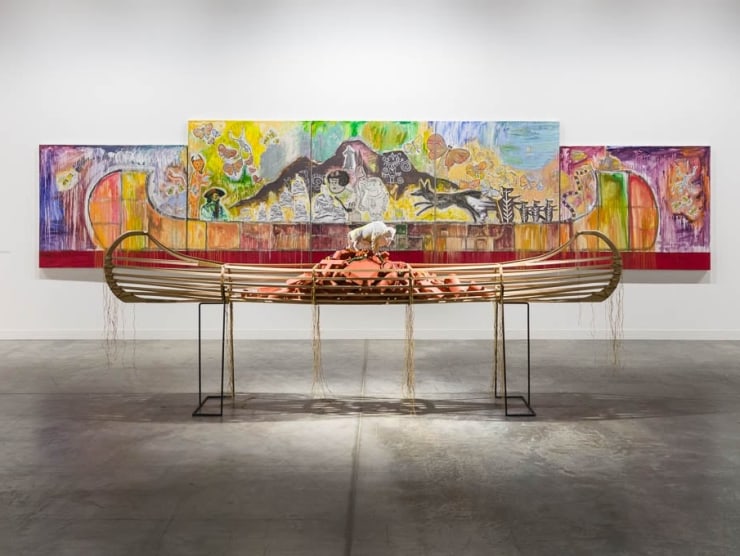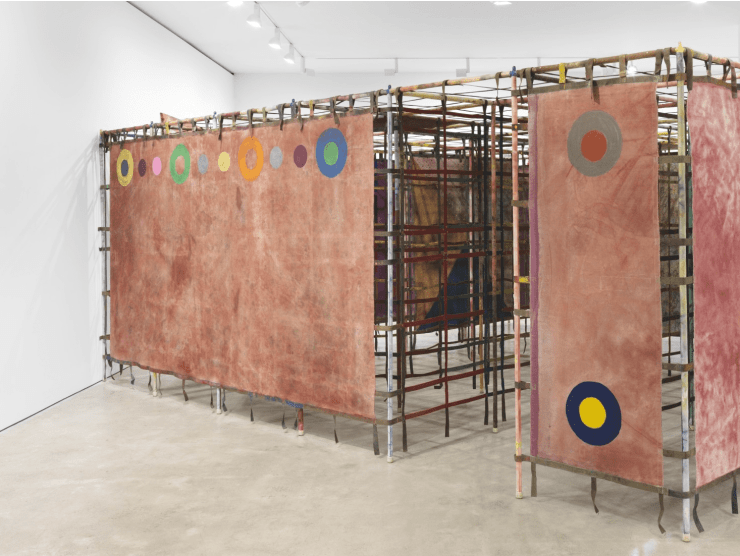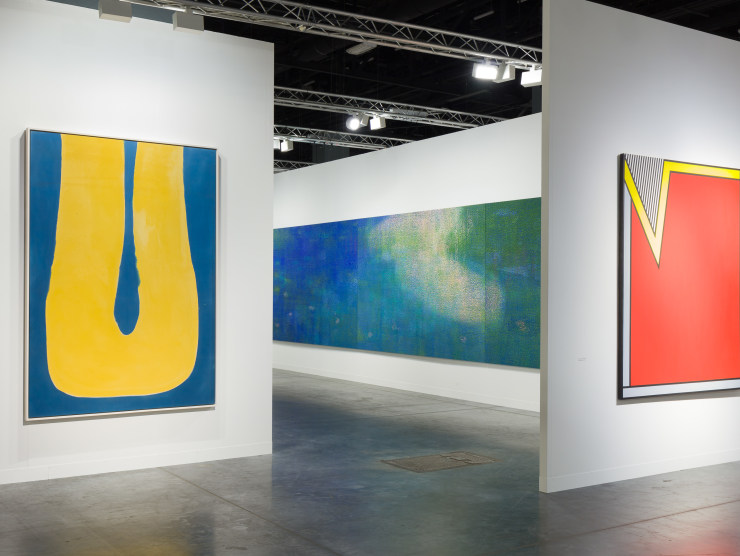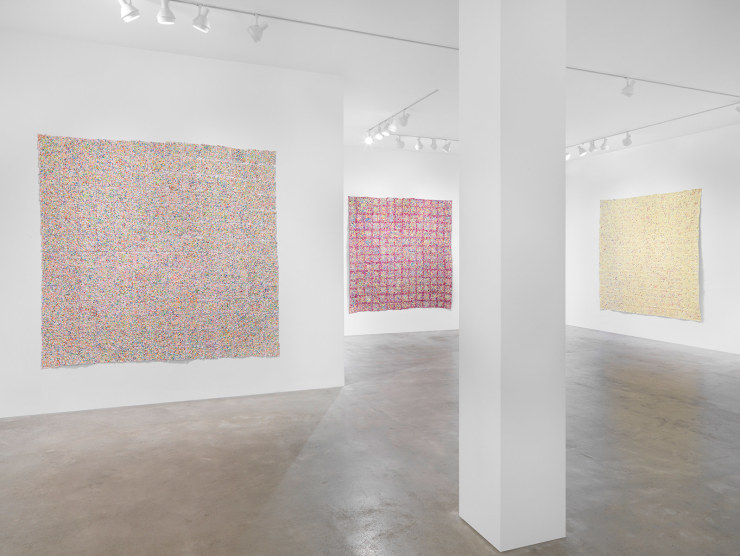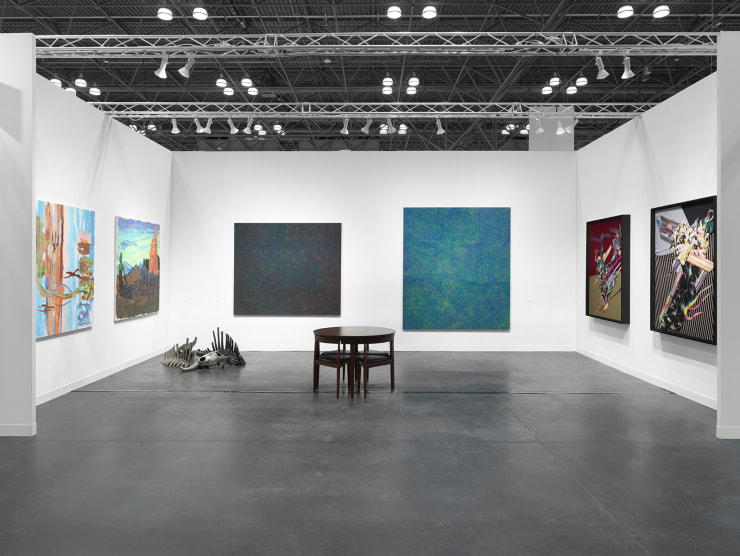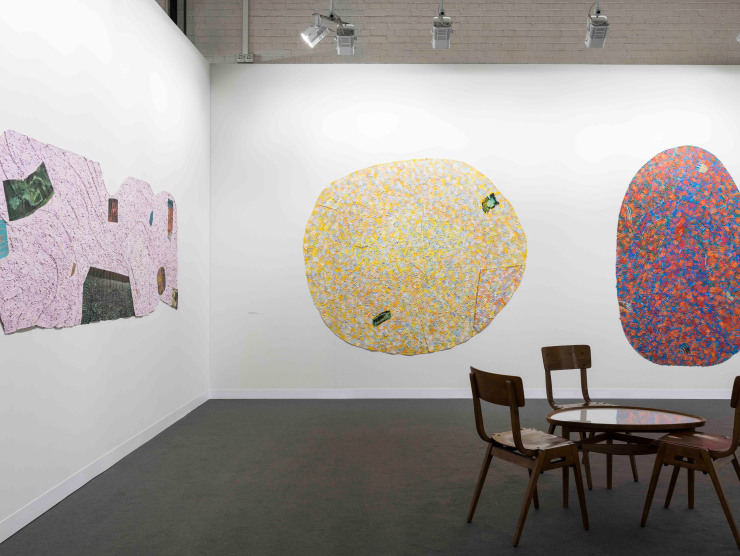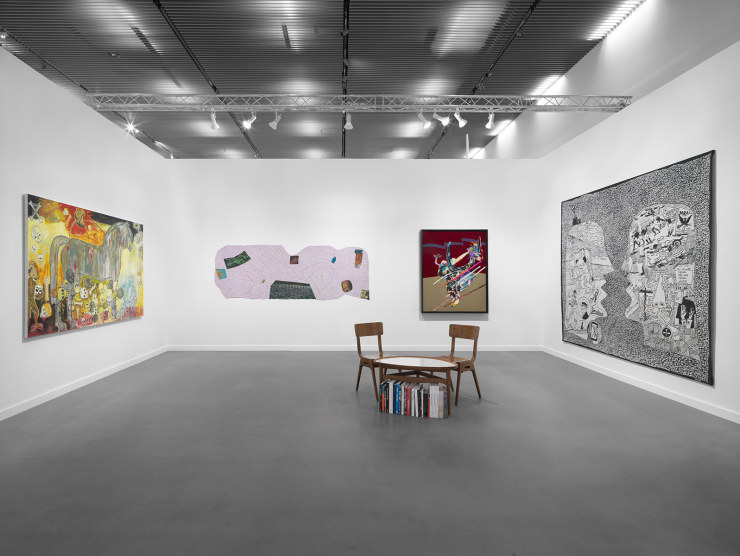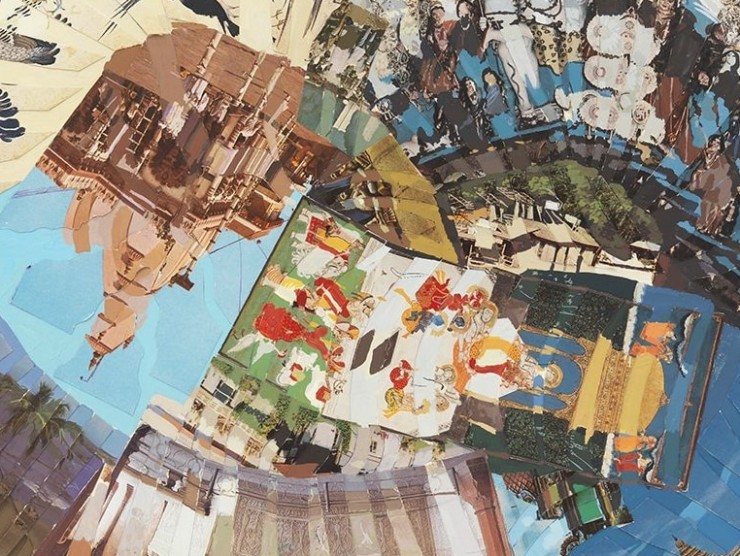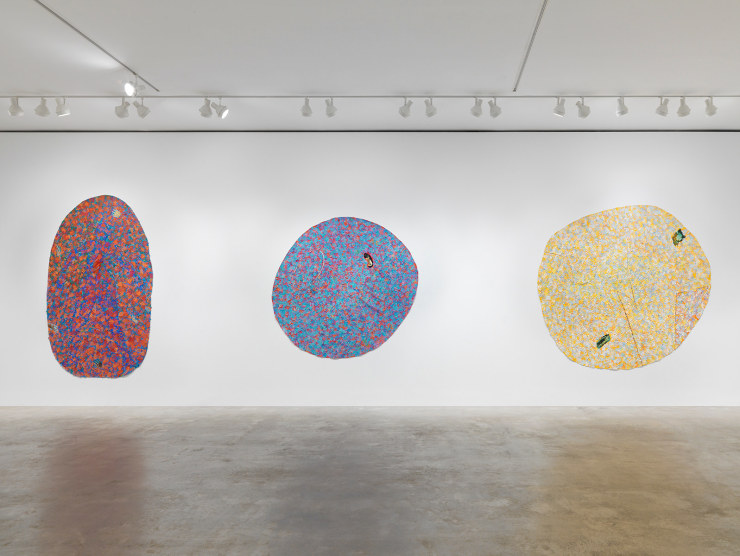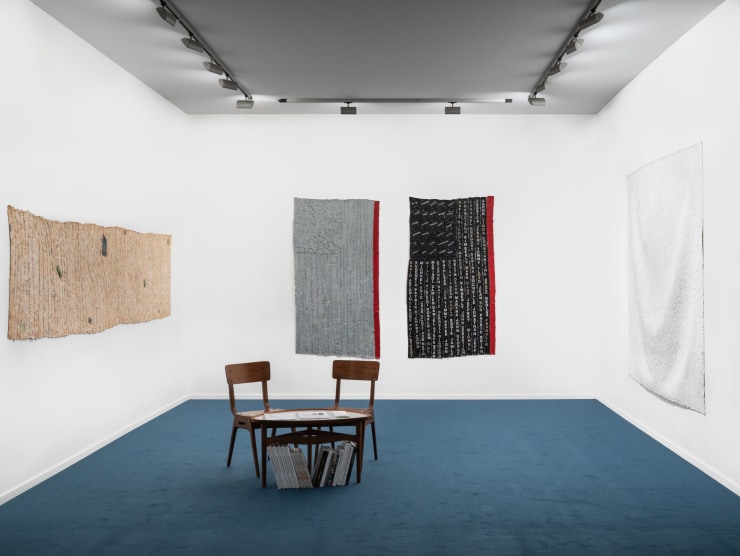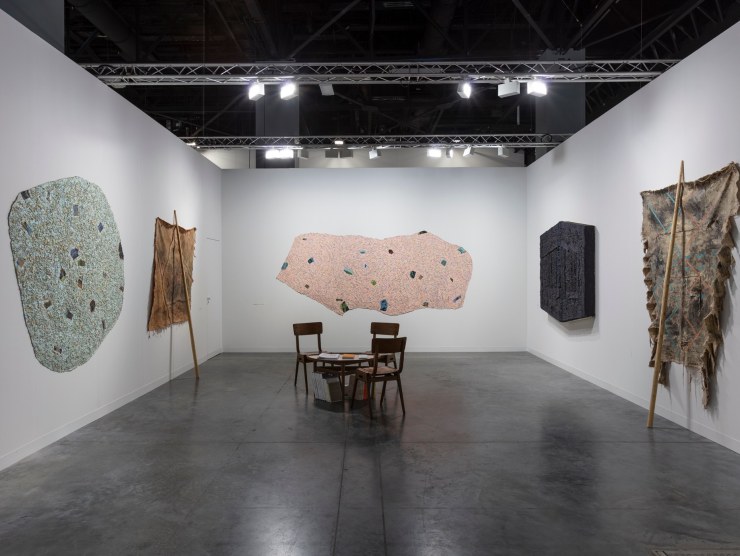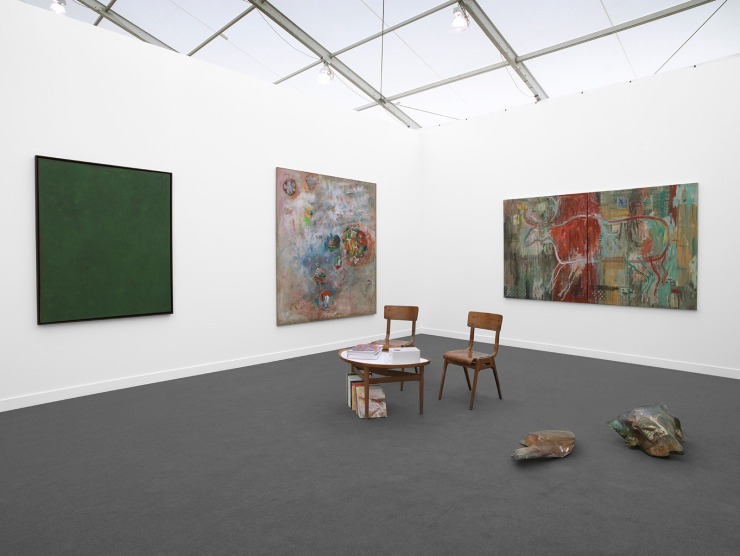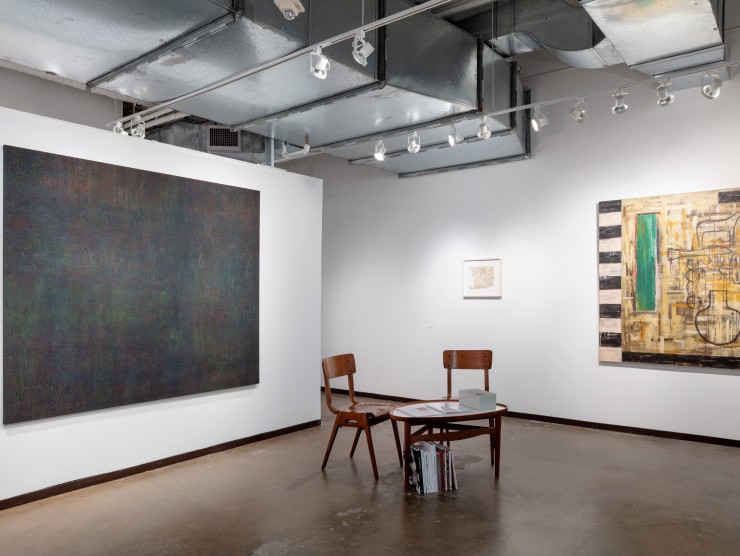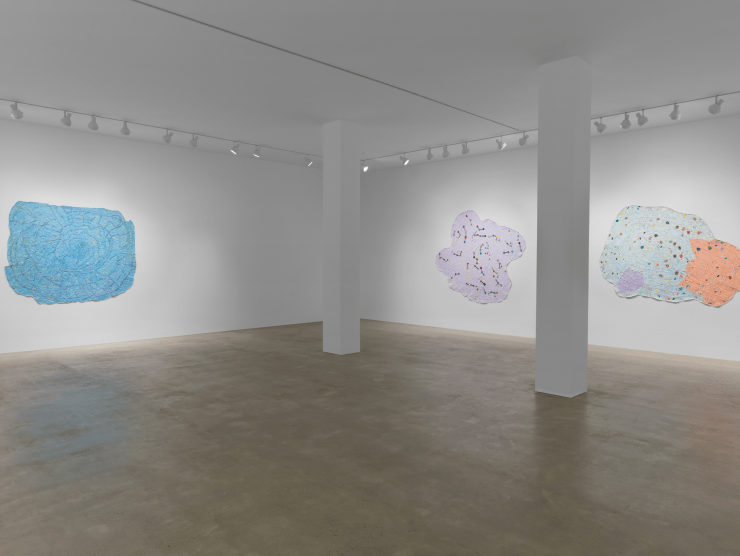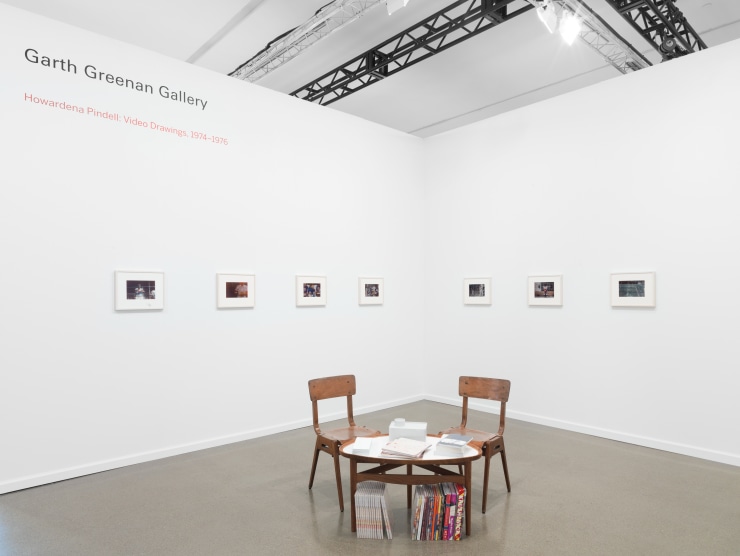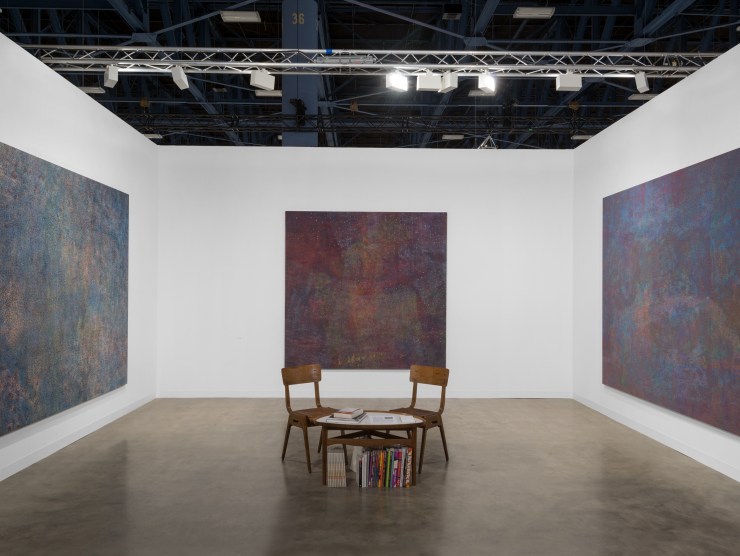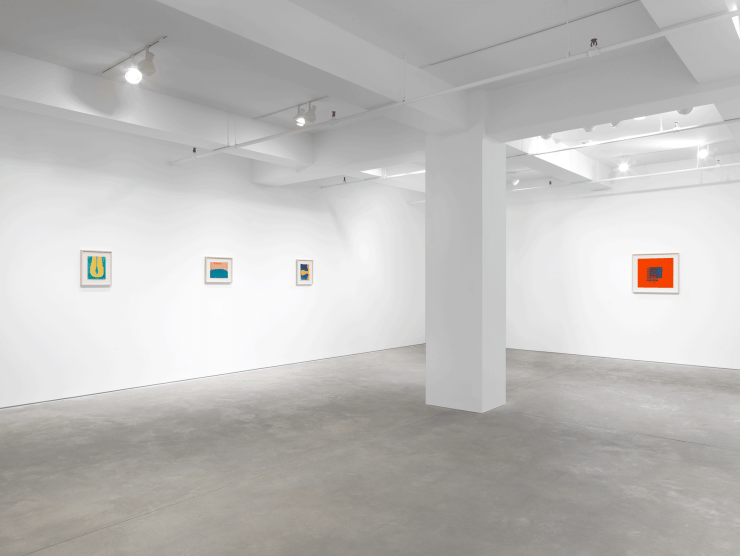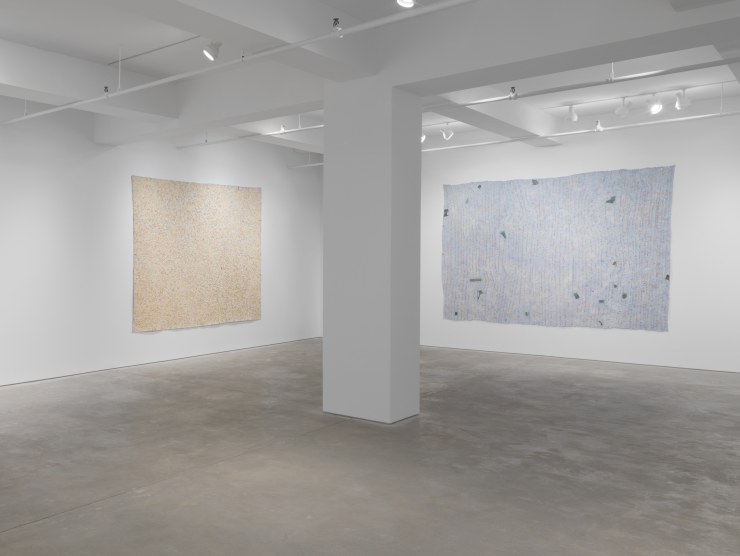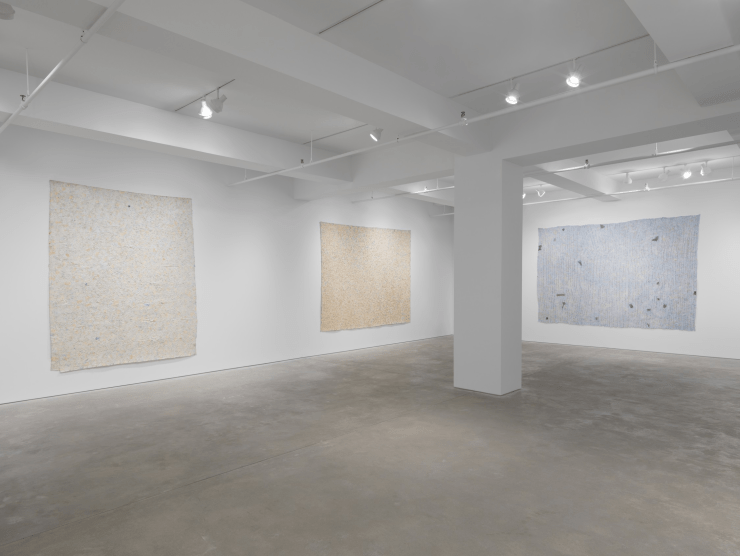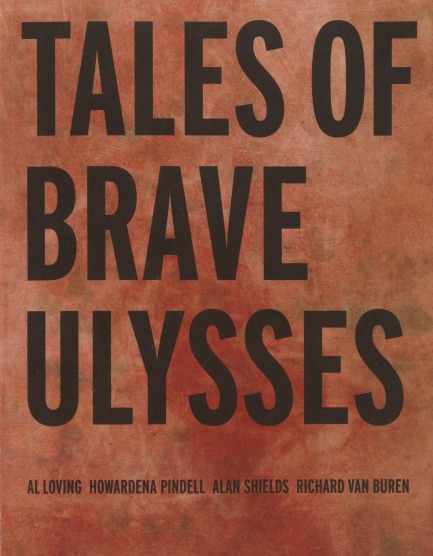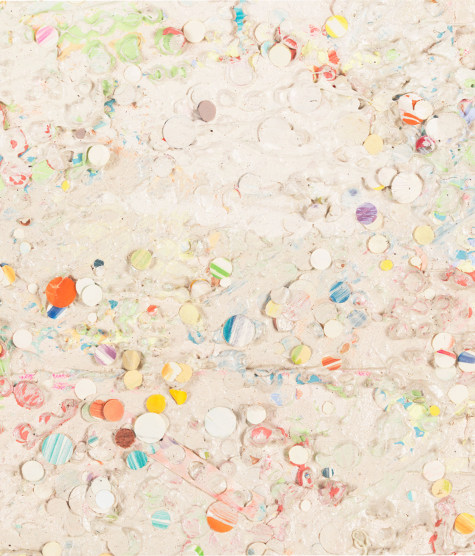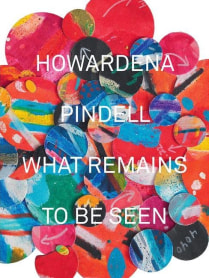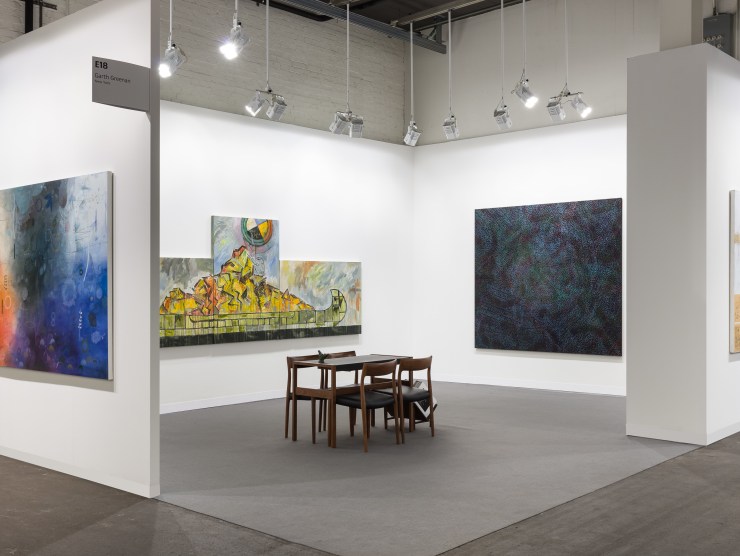
Born in Philadelphia in 1943, Howardena Pindell studied painting at Boston University and Yale University. After graduating, she accepted a job at the Museum of Modern Art, where she worked for 12 years (1967–1979), first as Exhibition Assistant, then as Assistant Curator in the Department of National and International Traveling Exhibitions, and finally as an Associate Curator and Acting Director in the Department of Prints and Illustrated Books. In 1979, she began teaching at the State University of New York, Stony Brook where she is now a Distinguished Professor. Throughout her career, Pindell has exhibited extensively. Notable solo-exhibitions include: Spelman College (1971, Atlanta), A.I.R. Gallery (1973, 1983, New York), Just Above Midtown (1977, New York), Lerner-Heller Gallery (1980, 1981, New York), The Studio Museum in Harlem (1986, New York), the Wadsworth Atheneum (1989, Hartford), Cyrus Gallery (1989, New York), G.R. N’Namdi Gallery (1992, 1995, 1996, 2000, 2002, 2006, Chicago, Detroit, and New York), Garth Greenan Gallery, New York (2014, 2017, 2019), Spelman College Museum of Fine Art, Atlanta (2015) and the Museum of Contemporary Art, Chicago (2018).
Pindell often employs lengthy, metaphorical processes of destruction/reconstruction. She cuts canvases in strips and sews them back together, building up surfaces in elaborate stages. She paints or draws on sheets of paper, punches out dots from the paper using a paper hole punch, drops the dots onto her canvas, and finally squeegees paint through the “stencil” left in the paper from which she had punched the dots. Almost invariably, her paintings are installed unstretched, held to the wall merely by the strength of a few finishing nails. The artist’s fascination with gridded, serialized imagery, along with surface texture appears throughout her oeuvre. Even in her later, more politically charged work, Pindell reverts to these thematic focuses in order to address social issues of homelessness, AIDs, war, genocide, sexism, xenophobia, and apartheid.
Howardena Pindell’s work has been featured in many landmark museum exhibitions, such as: Contemporary Black Artists in America (1971, Whitney Museum of American Art), Rooms (1976, P.S. 1 Contemporary Art Center), Another Generation (1979, The Studio Museum in Harlem), Afro-American Abstraction (1980, P.S.1 Contemporary Art Center), The Decade Show: Frameworks of Identity in the 1980s (1990, New Museum of Contemporary Art), and Bearing Witness: Contemporary Works by African-American Women Artists (1996, Spelman College Museum of Fine Art, Atlanta).
Most recently, Pindell’s work appeared in: Energy/Experimentation: Black Artists and Abstraction, 1964–1980 (2006, The Studio Museum in Harlem), High Times, Hard Times: New York Painting, 1967–1975 (2006, Weatherspoon Art Museum, University of North Carolina, Greensboro), WACK! Art and the Feminist Revolution (2007, Museum of Contemporary Art, Los Angeles), Target Practice: Painting Under Attack, 1949–1978 (2009, Seattle Art Museum), Black in the Abstract: Part I, Epistrophy (2013, Contemporary Arts Museum, Houston), and Painting 2.0: Expression in the Information Age, (2015–2016, Museum Brandhorst; 2016, Museum Moderner Kunst) and We Wanted a Revolution: Black Radical Women, 1965–1985 (2017, the Brooklyn Museum, New York). Howardena Pindell was the subject of the 2018 retrospective at the Museum of Contemporary Art, Chicago titled Howardena Pindell: What Remains to Be Seen, which traveled to the Virginia Museum of Fine Arts (2018) and the Rose Art Museum (2019). In 2020, she was the subject of the solo exhibition Howardena Pindell: Rope/Fire/Water at The Shed, New York. Pindell's first major one-person exhibition in Europe, Howardena Pindell: A New Language, opened at the Fruitmarket, Edinburgh, in 2021, and traveled to Kettle's Yard, Cambridge, in 2022.
Pindell’s work is in the permanent collections of major museums internationally, including: the Brooklyn Museum; the Corcoran Gallery of Art; the Fogg Museum, Harvard University, Cambridge; the High Museum of Art, Atlanta; the Louisiana Museum of Modern Art, Copenhagen; the Metropolitan Museum of Art; the Museum of Contemporary Art, Chicago; the Museum of Modern Art; Museum of Fine Arts, Boston; Museum of Fine Arts, Houston; the National Gallery of Art, Washington, D.C.; Pennsylvania Academy of the Fine Arts, Philadelphia; the Philadelphia Museum of Art; The Studio Museum in Harlem; the Smithsonian Museum of American Art, Washington, D.C.; the Wadsworth Atheneum, Hartford; the Walker Art Center, Minneapolis; the Whitney Museum of American Art; and the Yale University Art Gallery, New Haven.
















